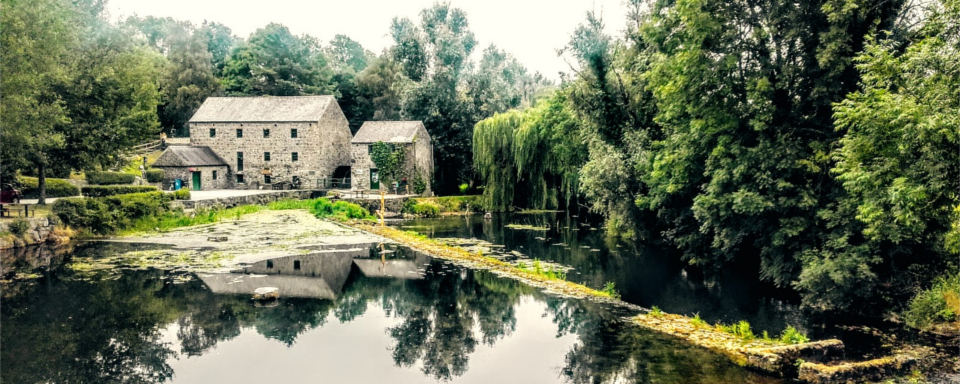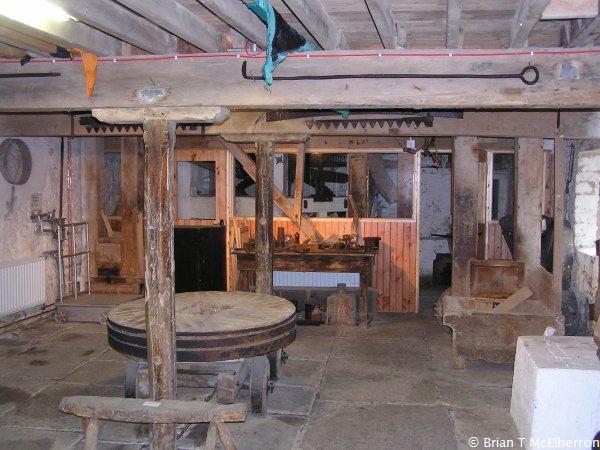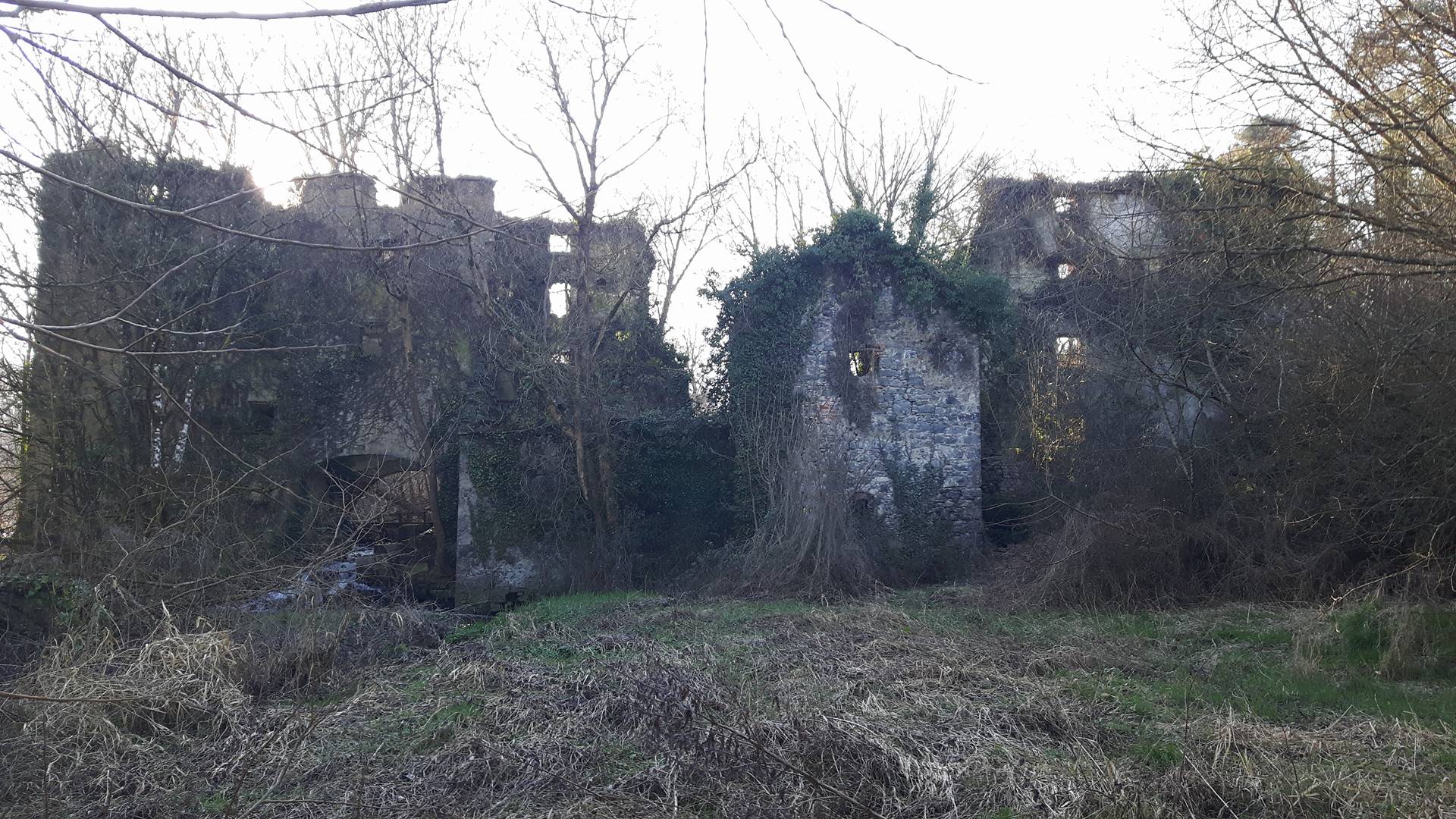
Kells Mill

The milling history of Kells stretches right back to it's origins and this can be represented best at Kells Mill. There has been a mill on the current site since the foundation of Kells. The original mill would have supported the castle (Motte and Bailey) and priory. It was probably established in the 12th or 13th century.
In the 18th century, the mill was taken over by French Hugenots, the Mullins, who escaped religious persecution prior to the French Revolution in 1789 and moved to Ireland carrying their rich milling tradition with them. Their name comes from the French word for mill, ‘Moulin’.
The current building dates from 1782 and was in operation until 1966, a year after the last Mullins miller died in 1965, Patrick Mullin. This concluded a family tradition of 200 years milling in Kells. The mill is designed to crush corn to make flour, although a flax/tuck mill was established in the building beside it, but this ceased to be viable in the 1800’s when the linen industry in Ireland died out.
The water level on the mill pond is controlled using a sluice, this can be seen to the right of the mill. The sluice moves up and down using gears which are still visible. At the end of the mill pond is a narrow channel running to the mill wheel itself. The mill wheel is made from iron with wooden paddles attached to catch the water flow and turn the wheel. The turning of the mill wheel causes gears to move inside the mill. The gears turn the millstones which grind the corn into chaff (which is waste) and flour. There is an old millstone lying outside the mill. If you look closely you can see that it’s made up of a number of smaller stones held together by a band of iron. Each year the stone was dressed, which was a skilful job of putting grooves into the wheel to ensure it could grind the grain correctly.
A number of records relating to Kells Mill can be viewed in our Archive.
Kells mill is open to the public by request only on weekends as a Visitor Centre, and will reopen again fully in Summer 2019. Visitors can enjoy a short video on the history of Kells, a guided tour, and a complimentary guidebook & map of our village. Please call Tadhg (0863633630) to make a weekend booking.

Hutchinsons Mill
Hutchinsons Mill was built around 1800, much later than other mills in the area. It’s a 13-bay, 5-storey mill that was also used to grind corn. The impressive large-scale mill forms an important element of the industrial heritage of Kells having historically supported much of the agricultural economy of the locality and the hinterlands.

Kellsgrange Mills

Known locally as Bradleys Mill, this impressive ruin is located just next to the motorway in Garranaman, Kells. It would have been the largest of Kells' mills and was five stories tall. It likely came into the possession of the Bradley family in 1885 when it went up for sale by private treaty along with an adjoining 28 acres.
Also on the lands of the mill were; a house with enclosed garden, out-offices, and a building used for threshing grain (removing seeds from the stalks and husks).
In 1944, this corn mill was dismantled piece by piece from top to bottom, with every bit of it put up for public auction on the 19th of May in a demolition sale.